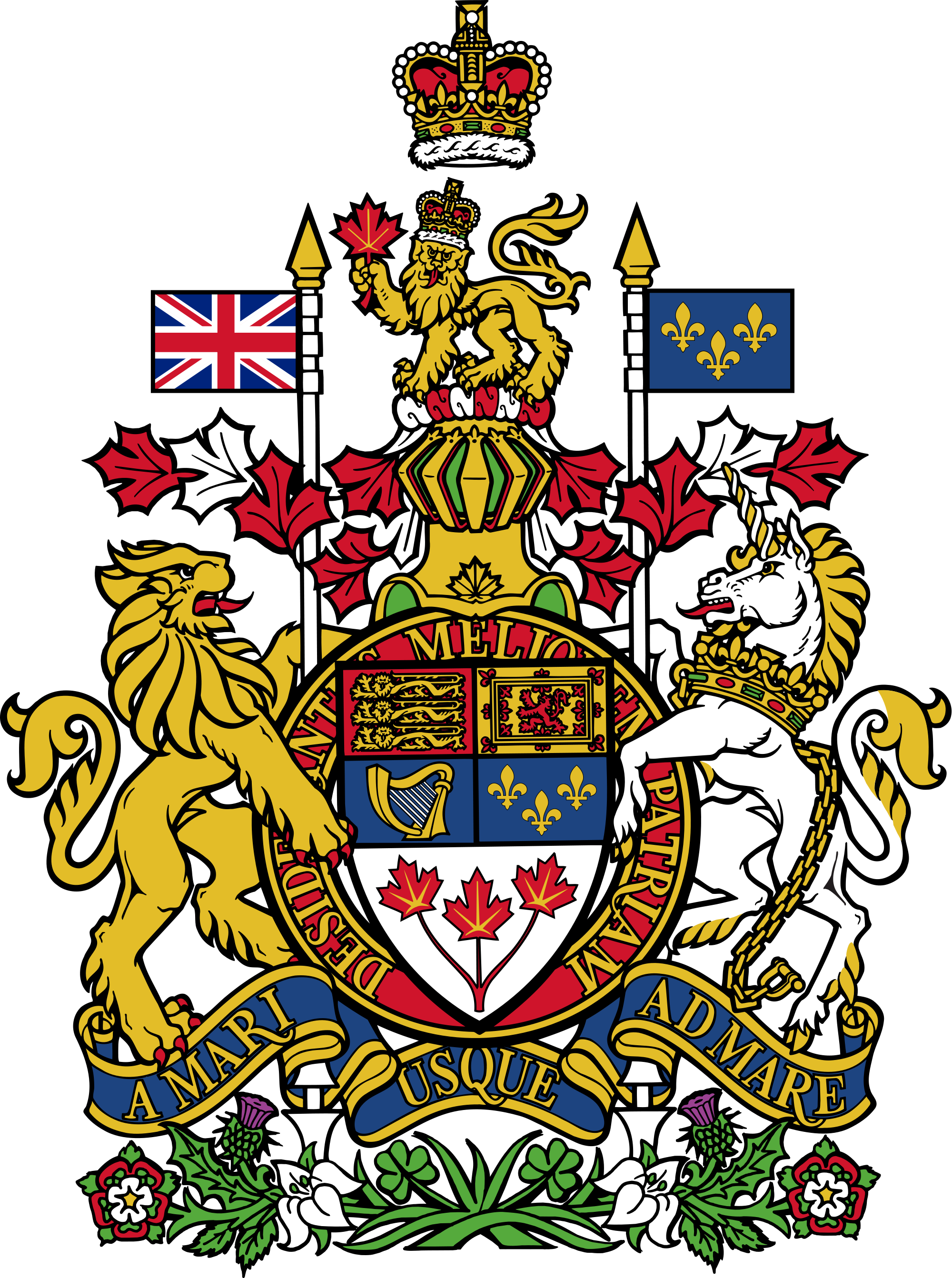Coat of arms of Canada

An amazing fact, but the royal coat of arms of Canada, as one of the main symbols of the country, appeared not so long ago. This is mainly due to the fact that Indians lived here, therefore, until the mass migration of peoples from Europe began, the transfer of European traditions, no one thought about creating a single state and its main symbols.
Formation of an official symbol
The first mention of the badge as the coat of arms of the Canadian Confederation dates back to 1868. It was a set of coats of arms of the four provinces available at that time. In connection with the rapid expansion of Canadian lands and the emergence of new territorial entities, the main symbol also began to become more complex. By 1905, it already consisted of nine parts, and this made it too difficult to understand..
In 1915, it was decided to develop a new sketch, six years later, in November 1921, King George V approved the coat of arms of Canada. Minor changes were made in 1957 and 1994.
Important symbols of the Canadian coat of arms
At the moment, the official coat of arms of Canada has a rather complex composition, each of its elements plays a specific role. The main and additional details can be distinguished in the image, including:
- the crown of St. Edward (introduced in 1957 instead of the Tudor crown);
- crest, which is a copy of the English crowned lion, but holding a maple leaf in its paw, the symbol of Canada;
- windbreak, intertwined tubes of red and white fabric;
- helmet and heraldic mantling, in the form of red and white maple leaves;
- heraldic shield;
- tape with the motto, officially approved in 1994;
- supporters borrowed from the English coat of arms (unicorn and lion);
- base of flowers.
The most complex element of the coat of arms of Canada is the shield, which reflects the main historical events. It is cut into 5 parts, four of them symbolize the four countries where the first settlers came from: England - a red field and golden lions, Scotland - a golden field and a red lion (reverse situation), Ireland - a golden harp, France - royal lilies on a blue background ... The lower part of the shield is a maple branch, a symbol of the unity of the nation.
The shield holders, the lion and the unicorn, although similar to the English symbols, still have significant differences. First, they hold flagpoles, a lion with the royal banner of Britain, a unicorn, respectively, of France. In addition, the Canadian lion, unlike its English counterpart, is deprived of the crown..


